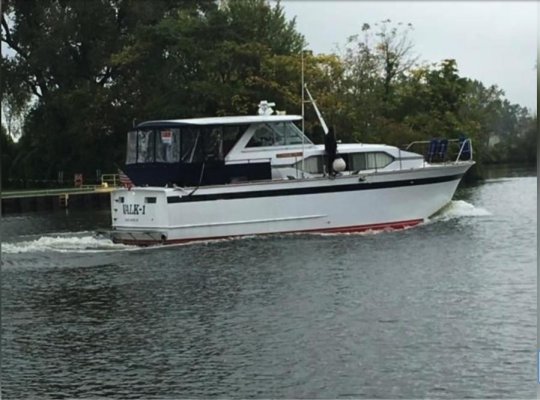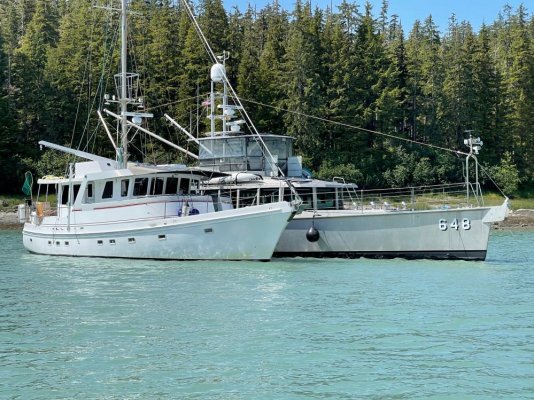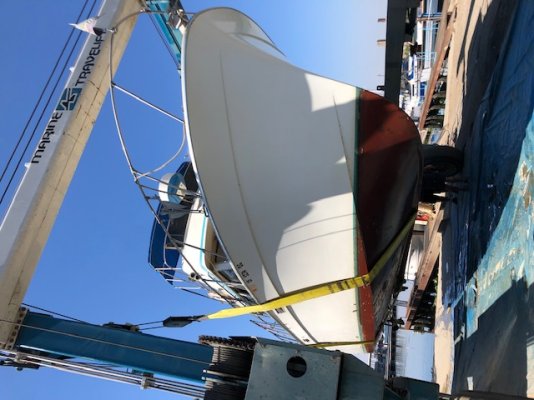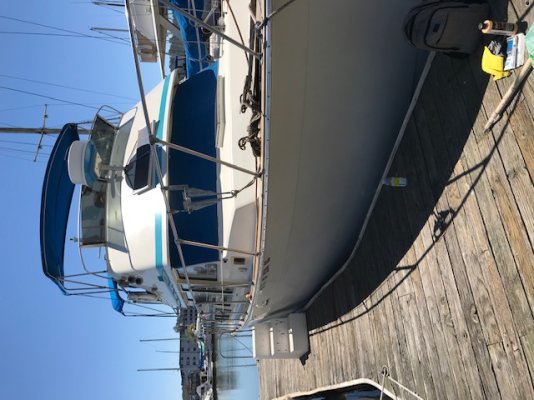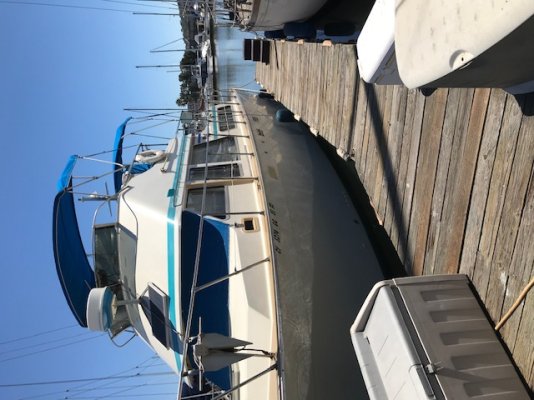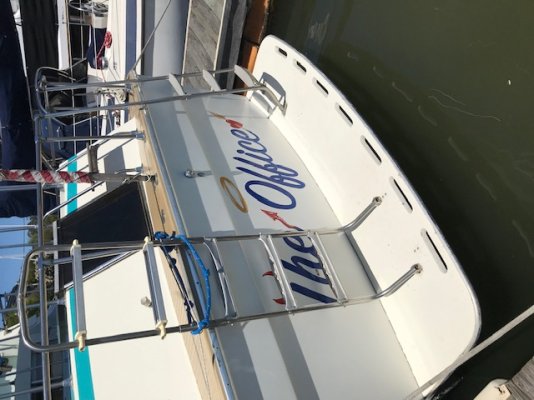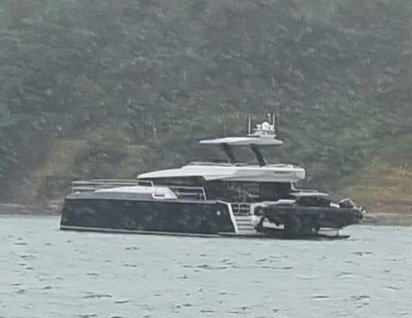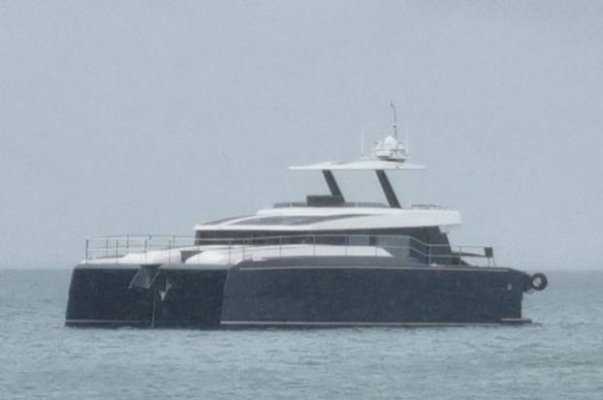I am late to the FPB discussion here, but had a few thoughts I might add. The FPB has been my absolute dream boat for years and I had the pleasure this summer of making friends with the owners of one on our summer cruise to Alaska. We ended up hitting it off and buddy boating for about 3 weeks around SE Alaska. It was a thrill to get to spend a bunch of time on an FPB and see its strengths and weaknesses first hand. To cut to the punch line, They are amazing machines, and would absolutely be my first choice if I wanted to do multiple ocean crossings, but for coastal cruising between Washington and Alaska, I am less excited about them than I was due to the major compromises built into the design. Some of my observations on why it wasn't as cool as I thought it would be for costal crushing.
- It is huge! Despite being a "64 foot" boat, it is closer to 75' long over all. For comparison in the picture below, our sterns are about lined up, and my boat is 56' over all (Which also feels huge coming into unknown marinas.) The size made it very stressful to bring it into marina's and small anchorages if you had any adverse wind, or didn't know exactly what you were getting into. It is a big boat for a couple or single handed to bring in and tie to a dock. It limits where you want to pull into and check out. It is also really long which would make moorage hard in some places, although it didn't seem like much of a problem in Alaska where we were.
- Talking with an owner about the actual expenses to own it was eye opening. Keeping it in the top condition it deserved was more expensive than I though it would be. Just the insurance was $45K/year!
-I love the great room layout! It is so sweet underway or at anchor. I would take it any day over a traditional trawler lay out. The 360 view is so sweet when you are sitting at anchor or underway. It is great to be able to cook dinner while underway, and not be shouting between different rooms with your wife. I think there are curtains you can put up if you want light isolation. I don't buy all the worry about light isolation in the pilot house. In my experience bringing my boat across the Pacific from Hawaii to Seattle it was a non issue. Nobody wanted to be up cooking or hanging out that much anyway during the night. And the person on watch was usually reading a book or watching movies or something that probably blew out their night vision anyway. With modern Radar and AIS you would see out into the darkness 10x better than you can with adjusted eyes anyways. If you were in a high traffic area where you were worried, it doesn't seem that hard to just keep the light off at night. It would be different if you were on a commercial boat that was operating 24/7 in costal waters, or during the winter when it gets dark super early. The bedrooms were perfectly adequate in the FPB, but definitely small for a 75' boat.
-The outdoor spaces were disappointing. The fly bridge feels cramped with 4+ people. The back deck space is fine, but not that great for hanging out. There was super comfortable outdoor space for 6+ people to hand out and have dinner, which seems lame on a 75' long boat.
-The speed was super sweet. Our boat cruises closer to 6.5kn(my biggest complaint about my current boat.) We would raft up at night, then leave about 3 hours before them at 5:00 in the morning, to get to the anchorage about the same time in the evening. I would love to have a boat that could cruise in the 9-10KN range, and think it would make the Alaska trip quite a bit more fun, but there are much cheaper ways to get there than an FPB.
-This is a very regional complaint, but it is no good for Salmon fishing. It can't really go slow enough, and even if you were to idle along on the wing engine, it is so tender without the stabilizers, that don't run off the wing, it would be miserable. Also the stabilizers don't work good anyways t 2-3kn.
Since my personal cruising plans don't involve crossing any oceans in the near future the FPB has moved down on my list of dream boats for the time being. It also made me like the boat I have better. It can really do anything/go anywhere the FPB can but slower, and at about 1/4 the used purchase price, and 1/4 the operating expenses. My current dreams for the next boat are for something a little faster than my current boat. We took about 9 weeks to do the Alaska trip and it was too many really long days at the helm. But even if we didn't have a kid in school limiting the time we had available we didn't have much desire to make it a much longer trip. We have too many other things we want to do at home and away from the boat. It would be really nice to have less time chugging along, and more time to mess around at the anchorages, and more time to fish. I am currently dreaming about a faster monohull in the 40-50' range, preferably Aluminum, or a power cat in the 38-48' range. I think that would be the ultimate if I could find a home berth to keep it in, which is hard around here.





